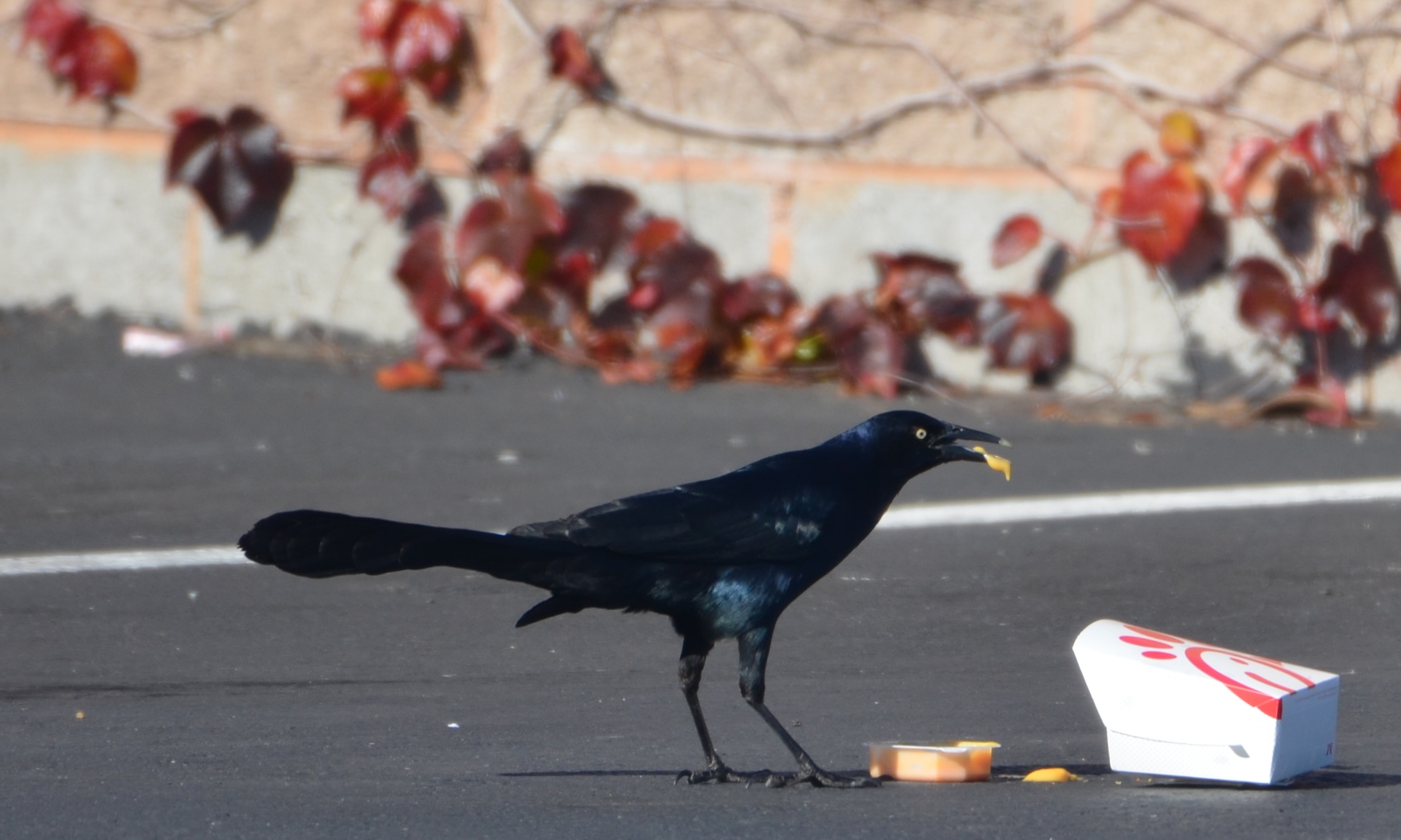
A new paper, led by Corina Logan, shows that the foraging behaviour breadth, persistence and variability of flexibility of birds could help them thrive in human-modified environments.
What helps birds adapt to human-modified environments and can they be trained to do so? While experts have talked about the importance of behavioural flexibility for some time, as expressed through foraging behaviours, habitat use and social behaviours, it is rare to find evidence that links flexibility to the foraging, habitat use and social behaviours in species that are successful in human-modified environments.
But researchers, led by Gates Cambridge Scholar Corina Logan [2008], have now gathered this evidence in the lab and in the wild in two populations of great-tailed grackles, a bird species that primarily lives in human-modified environments.
Their research, published today in Peer Community Journal shows that, while flexibility in foraging behaviour is crucial for adapting to human-altered habitats, it is not the primary driver of a rapid geographic range expansion – and that persistence and variability in flexibility, as well as the ability to exploit a wide range of food sources, seem to play a more significant role in facilitating a range expansion. These findings have important implications for conservation managers seeking to predict species’ success in new environments.
“We may laugh at the birds in parking lots eating the leftover French fries, but actually not all birds are able to change their behaviour to take advantage of these human-provided resources. So, it’s interesting to find that this ability to eat many different foods is also related to the cognitive trait, behavioural flexibility,” says Dr Kelsey McCune who was at the University of California Santa Barbara when she helped run the grackle research (she is currently at Auburn University).
A new measure of flexibility
The research team determined how flexible each grackle was using a behavioural choice test in the aviaries called reversal learning. This is a widely used test of flexibility where an individual learns to prefer a colour because the food is always in that coloured tube, and then their colour preference is reversed to a different coloured tube, which now always has the food.
After the grackles did the aviary test, they were released back to the wild and their foraging and social behaviour in the wild was observed from a distance. The researchers discovered that the grackles that were more flexible in the reversal learning test also switched between eating different food types more often in the wild.
“This is such a great discovery because it is really difficult to bring birds into aviaries to measure their flexibility. Now we have the ability to measure their flexibility just by watching them in the wild,” says lead researcher Corina who is now at the Max Planck Institute for Evolutionary Anthropology. This new way of measuring flexibility will make it much more accessible to a wide range of researchers because, apart from needing to be able to tell the individuals apart, all that is needed is a pair of binoculars.
Great-tailed and boat-tailed grackles
Behavioural flexibility is thought to be a primary facilitator for expanding into new areas. Researchers tested this by examining flexibility in two closely related species: the great-tailed grackle, which is rapidly expanding its geographic range, and the boat-tailed grackle, which is not. The idea was that if the great-tailed grackles needed flexibility to expand their range, then the boat-tailed grackles should be less flexible.
The researchers found that both species are highly flexible, which indicates that flexibility is not the primary facilitator of a rapid range expansion. “These species are similar in many ways: they eat the same kinds of foods, live in the same kinds of places, and they even look the same. That they are also similar in their levels of flexibility was surprising given their differences in how fast they are expanding, or not, their ranges,” says Corina.
These results placed in the context of the group’s previous findings on these species lend further support to the idea that persistence and variability in flexibility are involved in expanding the range of the great-tailed grackle. The researchers say that it is likely that, historically, both species needed flexibility to adapt to human-modified environments that encroached on their habitat. Perhaps, they reflect, they continue to rely on flexibility to interact in these human-modified environments, which is now their primary habitat.
They believe their findings provide an insight into what needs to be measured to predict how successful a species might be in a new area, which could be a useful tool for conservation managers.
*Top photo: A male great-tailed grackle eating fast food cheese sauce in Sacramento, California. Photo: Corina Logan.












